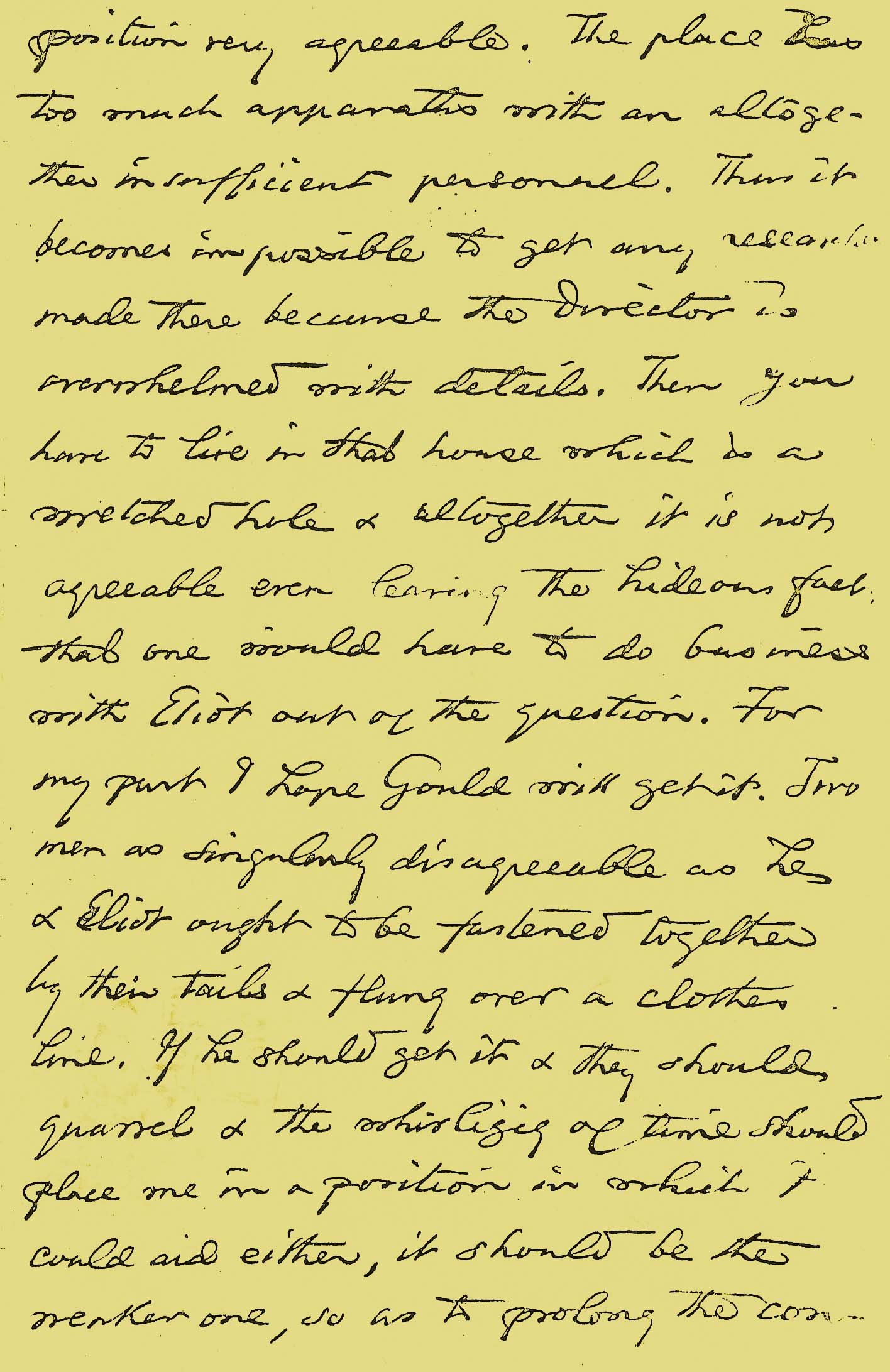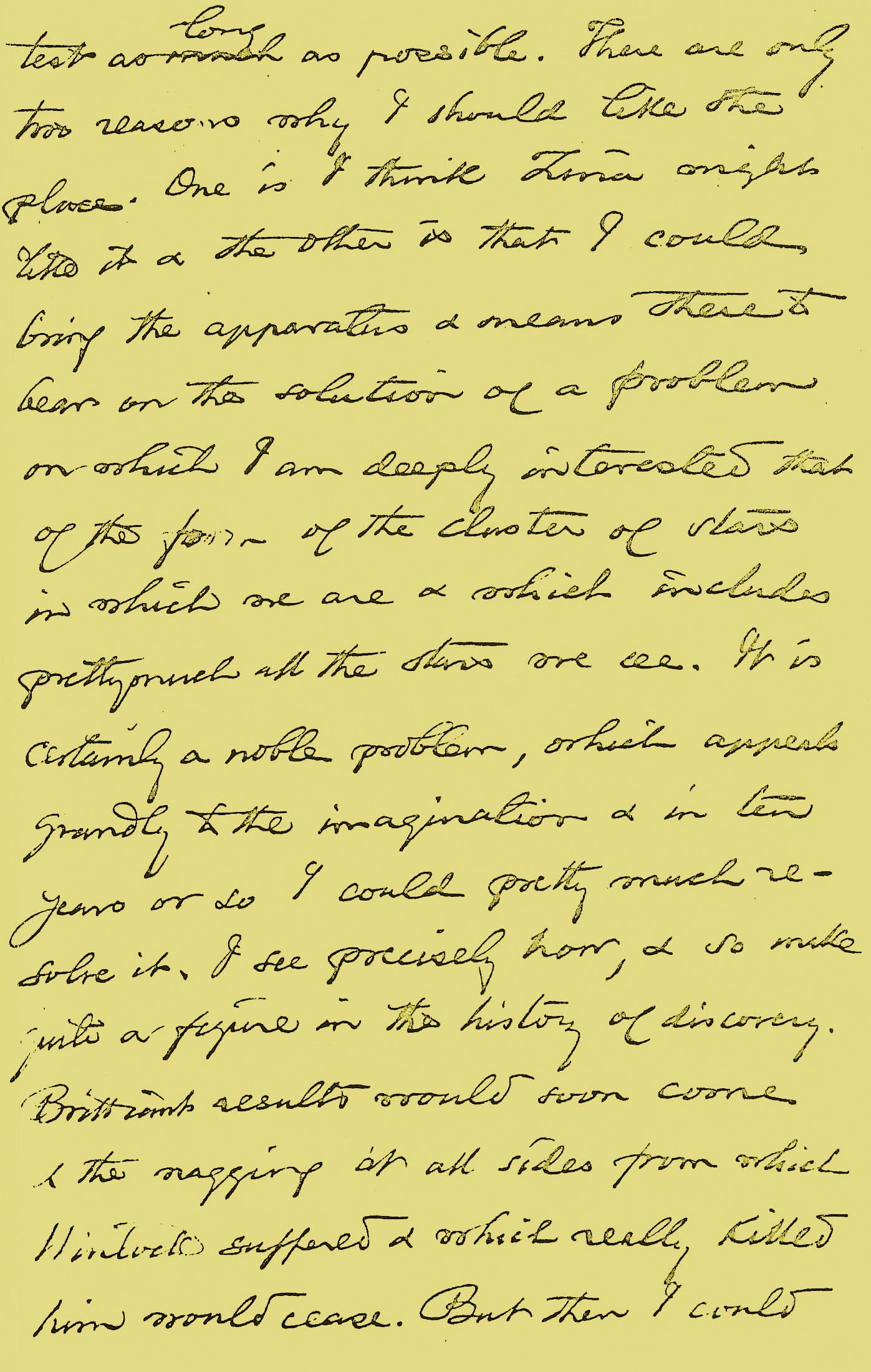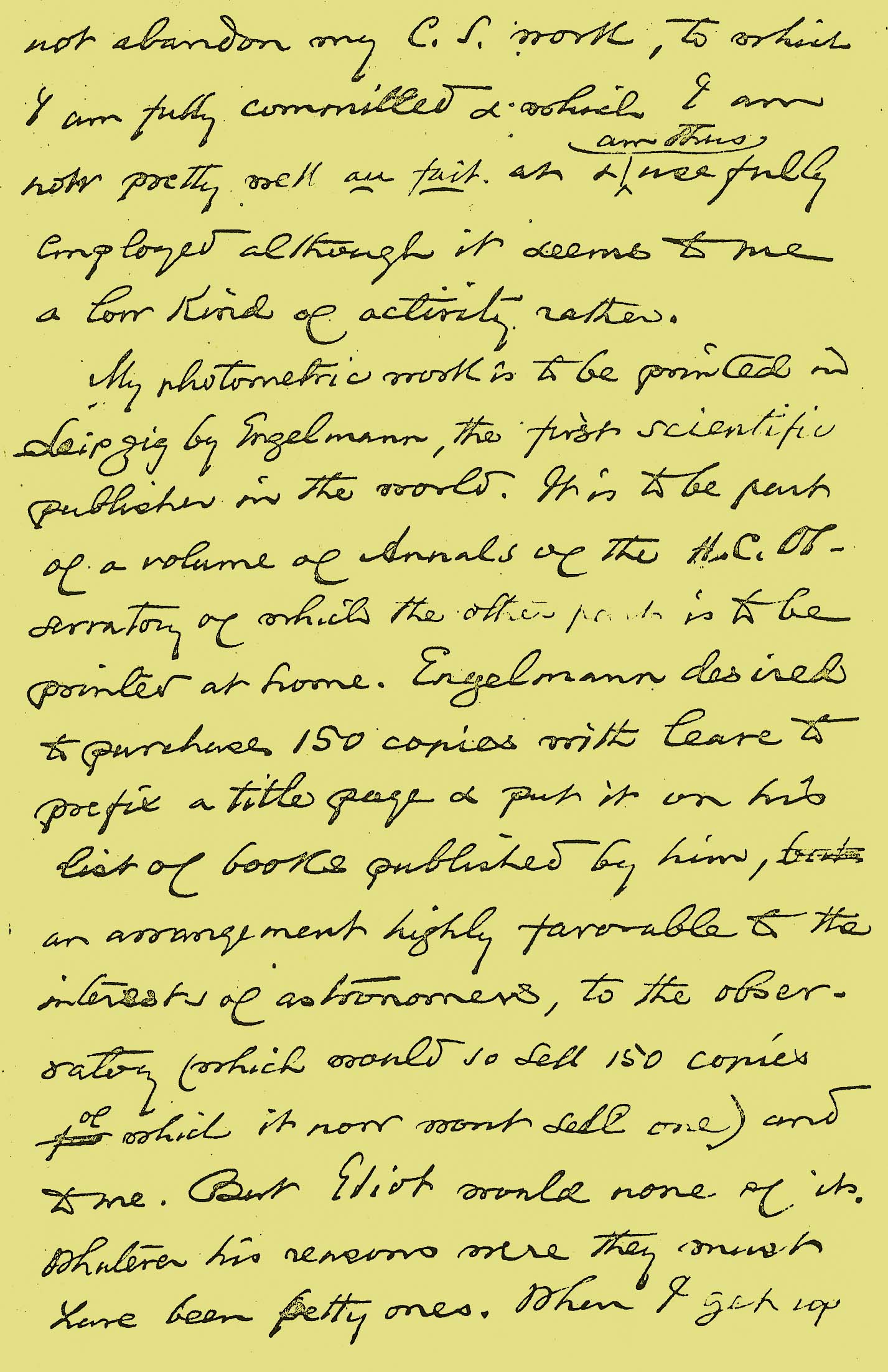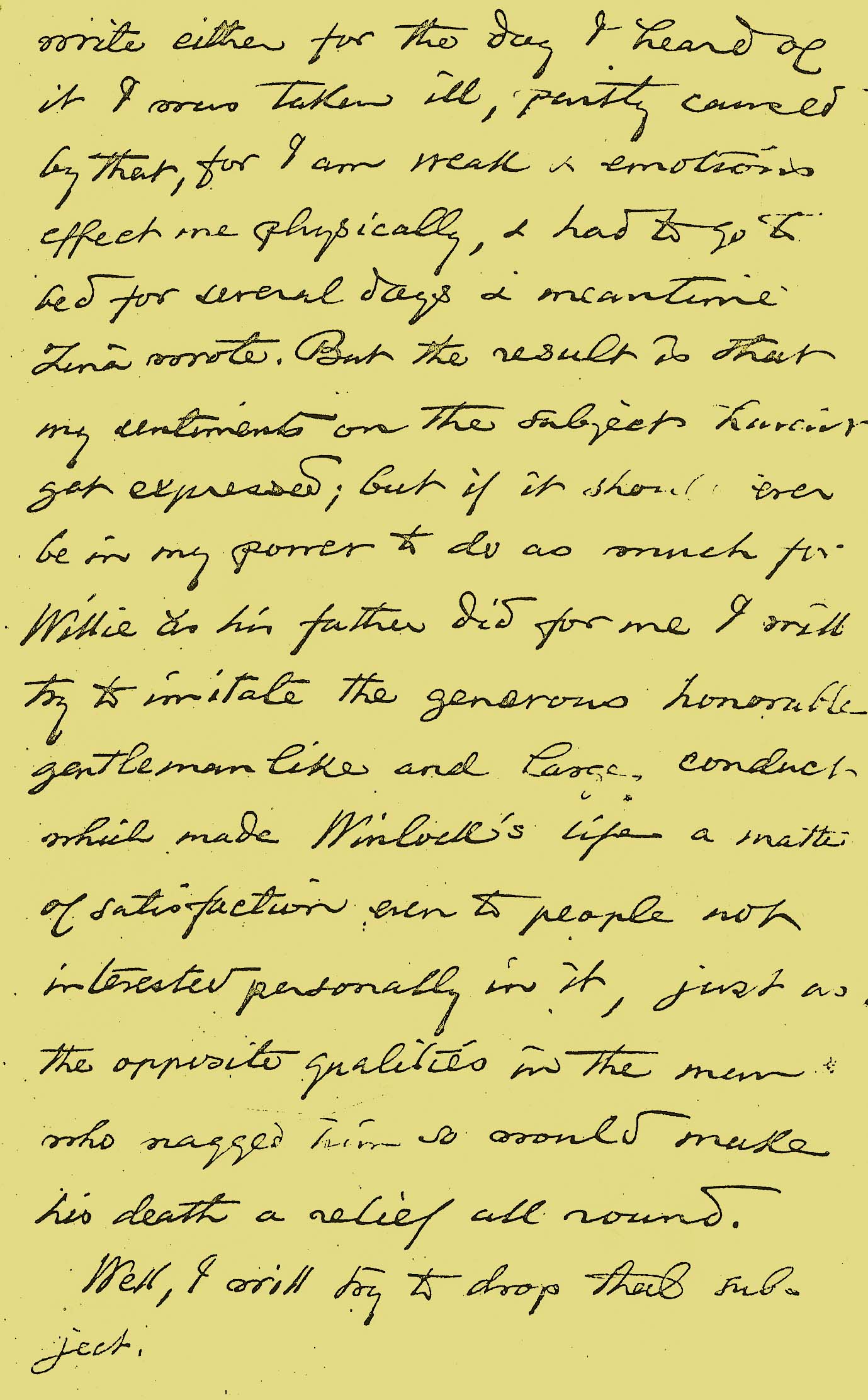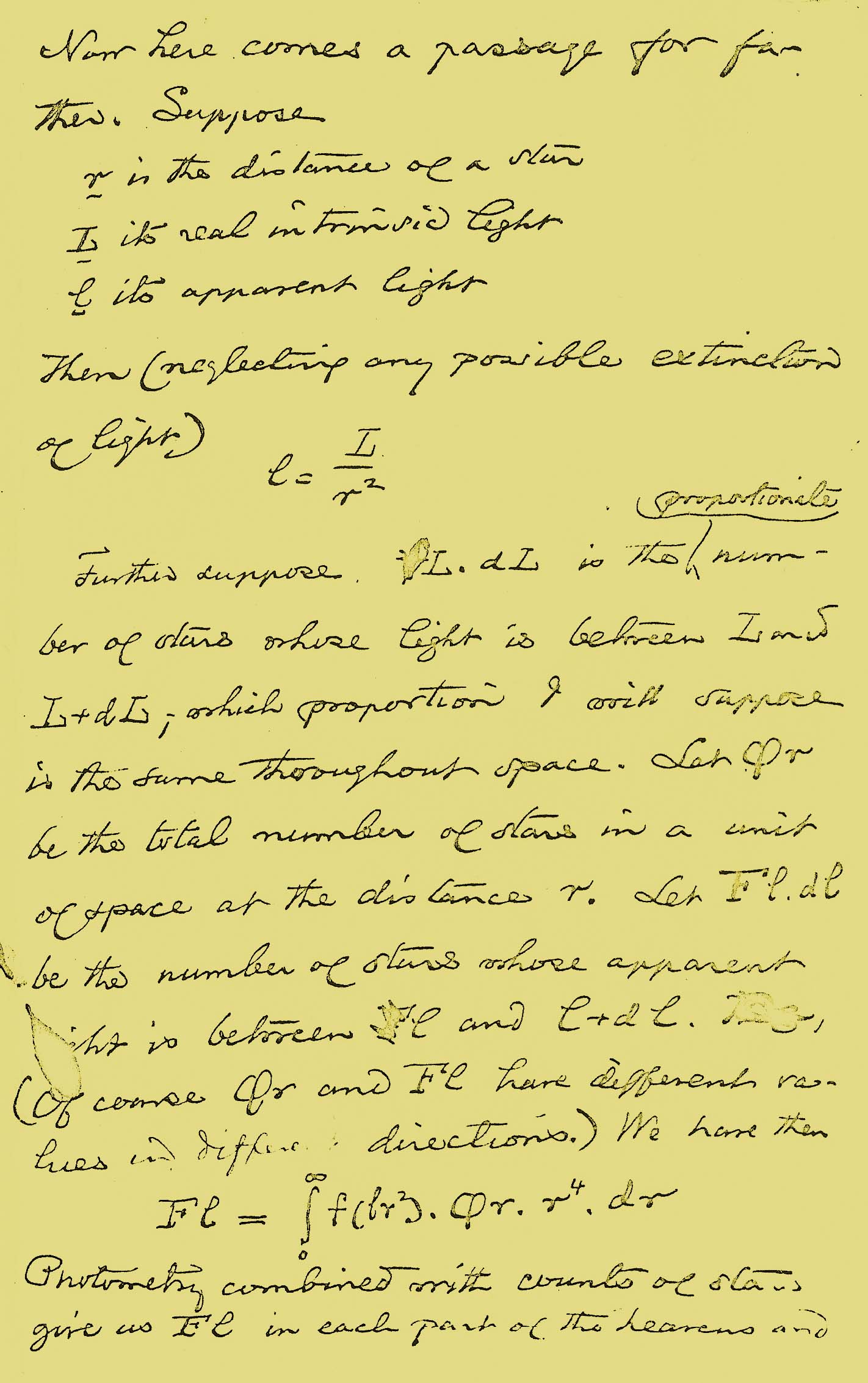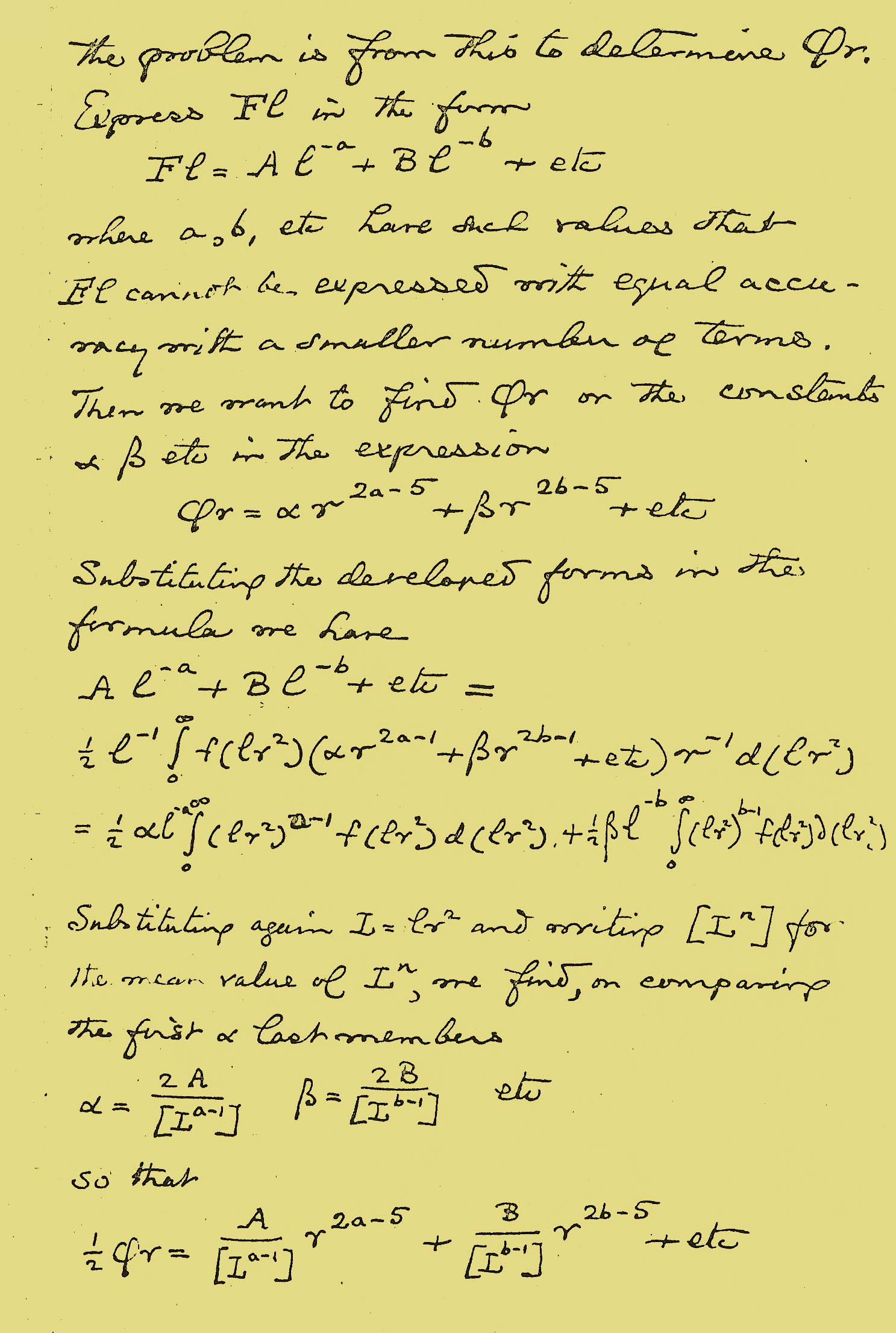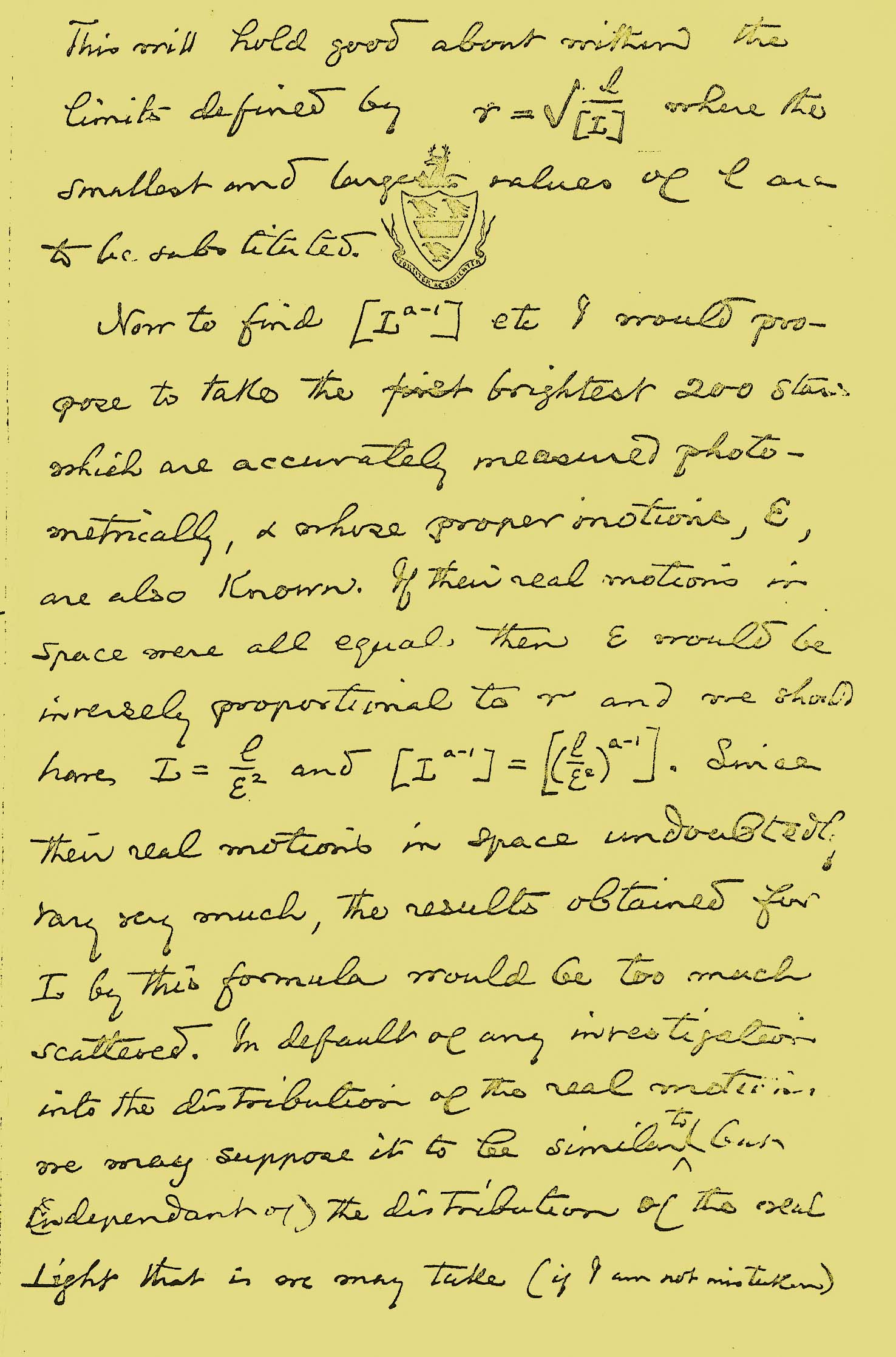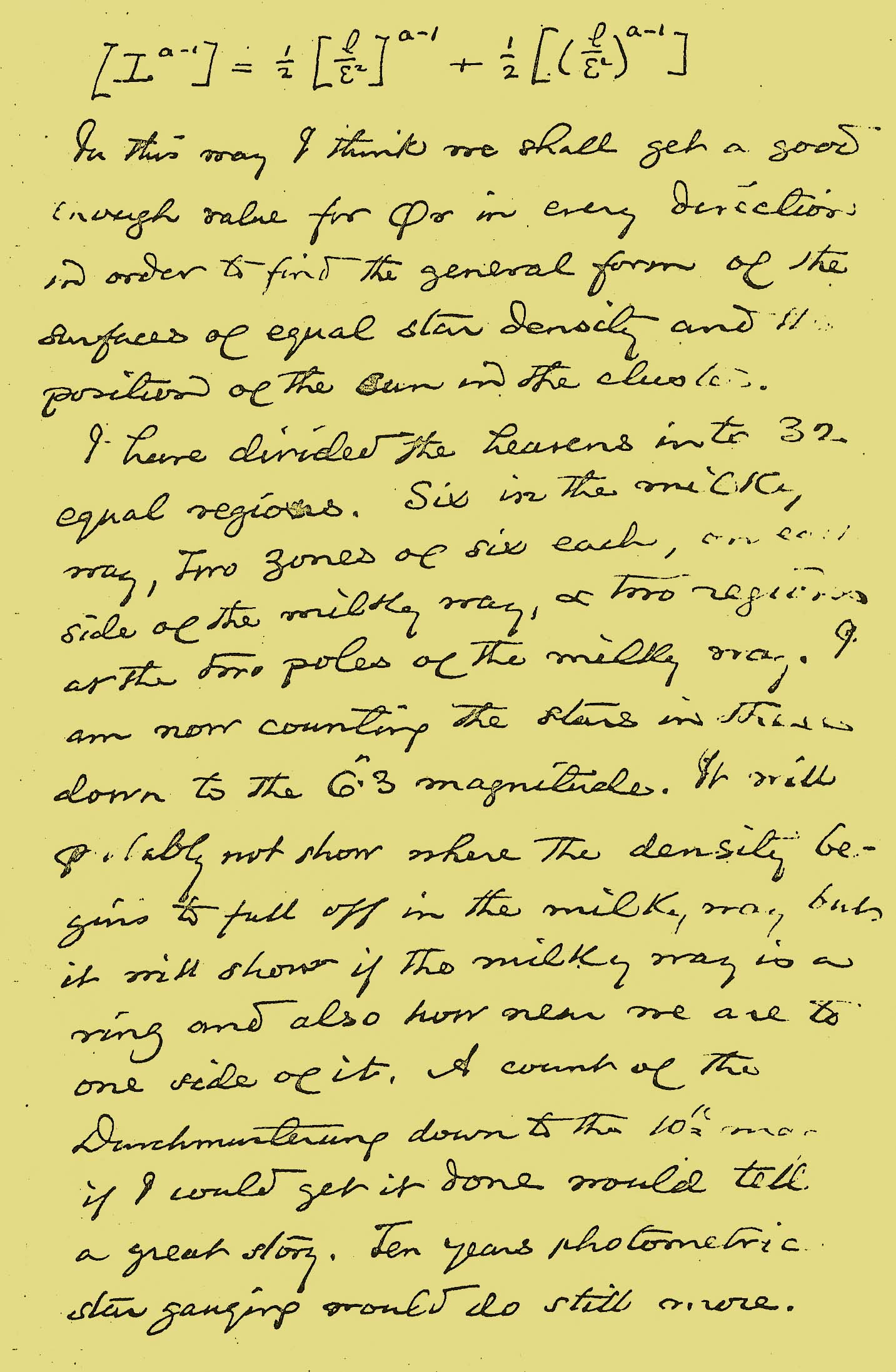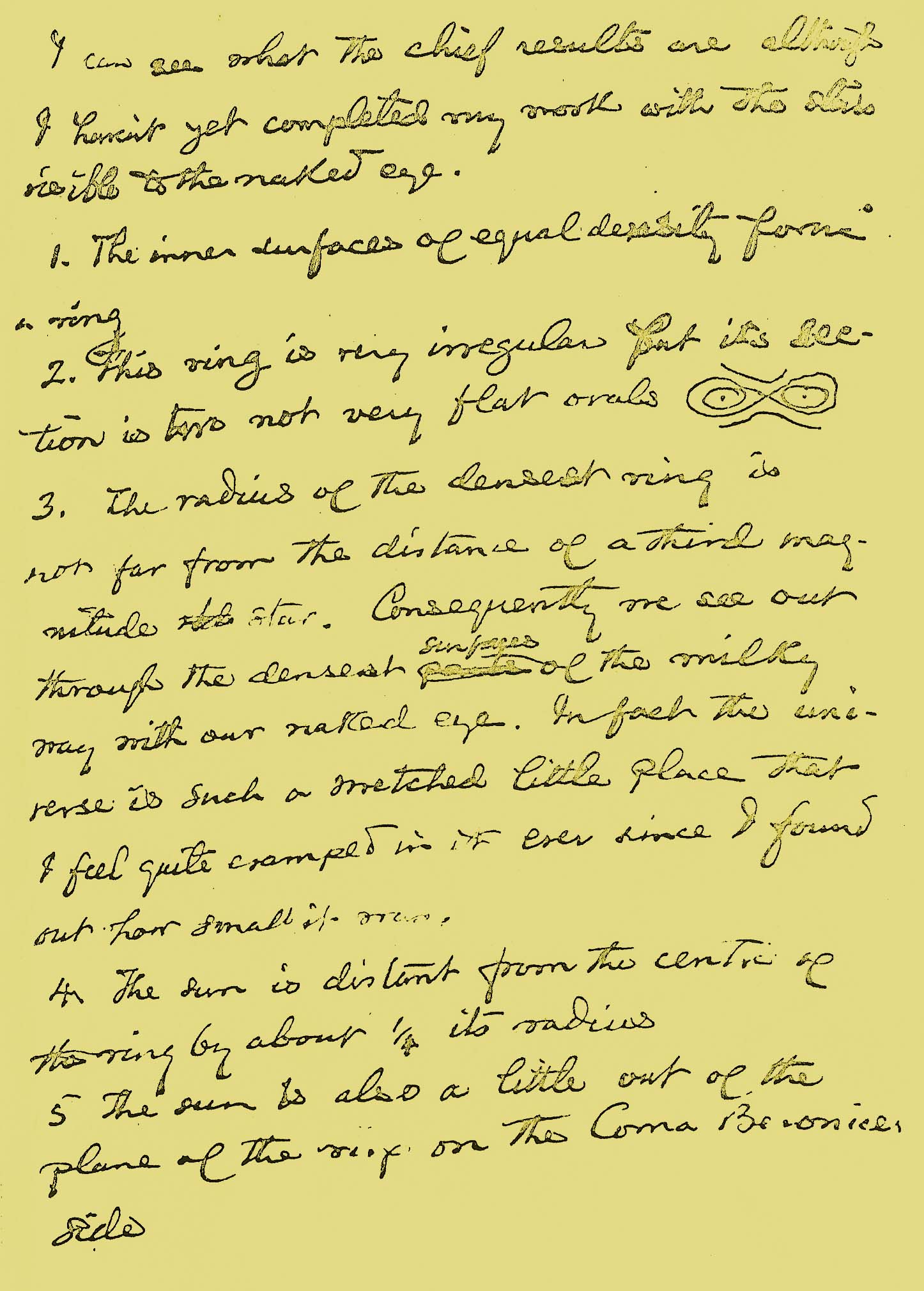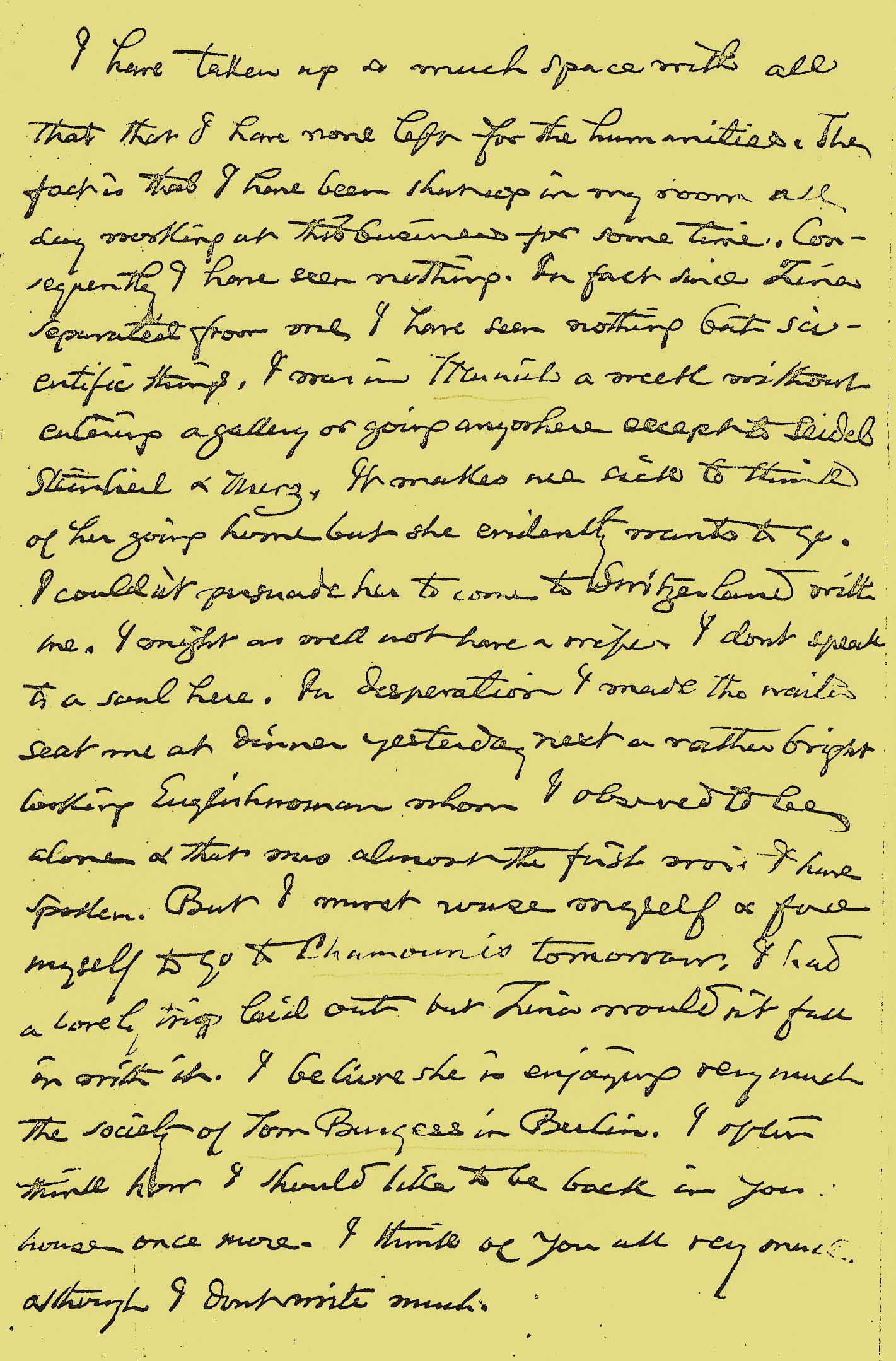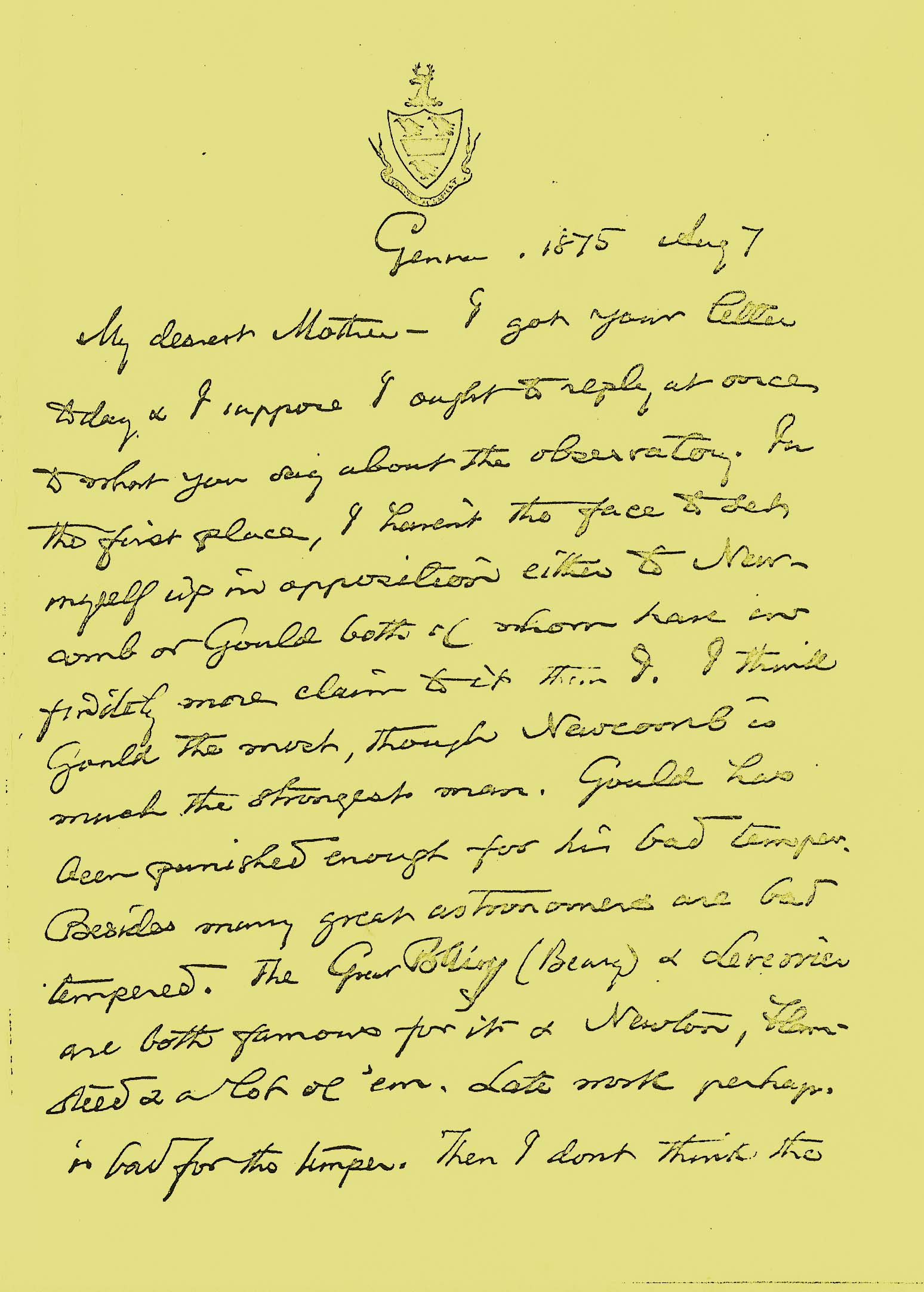
|
Geneva, 1875 Aug 7
My dearest Mother, I got your letter today & I suppose I ought to reply at once to what you say about the observatory. In the first place, I haven’t the face to set myself up in opposition either to Newcomb or Gould both of whom have infinitely more claim to it than I. I think Gould the most, though Newcomb is much the strongest man. Gould has been punished enough for his bad temper. Besides many great astronomers are bad tempered. The great Bairy (Beary) & Leverrier are both famous for it & Newton, Flamsteed & a lot of ‘em. Late work perhaps is bad for the temper. Then I don't think the
|
